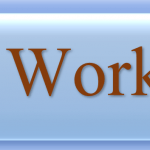I have attached last assignment you wrote. I think this one needs to connect to the first one.
First, read the following case:
U.S. Tariffs on Tire Imports from China
Then using some of the resources provided in this section you are asked to think as global managers in the same industry and review the questions at the end of the case. Prepare an internal memorandum to the CEO which overviews the issue and explains the talking points raised from the questions.
Please note your reply must be comprehensive. This denotes that all work must include proper citations and bibliography. All reference works must be scholarly, therefore, it is suggested to use the available links in the electronic library to aid your efforts.
Examples of Suggested Resources
- Tarun Khanna and Krishna G. Palepu, “Emerging Giants: Building World-Class Competitors in Developing Countries,” Harvard Business Review, October 2006.
- Antonie van Agtmael, “The Emerging Market Century: How a New Breed of World-Class Companies Is Overtaking the World,” Free Press, 2007. Boston Consulting Group, “The 2008 BCG 100 New Global Challengers: How Top Companies From Rapidly Developing Economies Are Changing The World,” January 2008.
- Nirmalya Kumar, “Strategies To Fight Low Cost Rivals,” Harvard Business Review, December 2006.
- Rosabeth Moss Kanter, “Transforming Giants,” Harvard Business Review, January 2008. A classic restatement of the factors that enable multinationals to stay agile.
- Susan Berger, “How We Compete: What Companies Around The World Are Doing To Make It In Today’s Global Economy,” Doubleday, 2005.
- Michael Porter, “How competitive forces shape strategy,” Harvard Business Review, 1979, Volume 57, number 2, pages 137-145. The classic statement of the Five Forces framework. Still worth a read (and re-read).
- Michael Porter, “What is strategy?” Harvard Business Review, November-December 1996, pages 61-78. A defense of the Five Forces framework at a time when the “benchmarking” and “core competences” were all the rage.
- Michael Porter, “The Five Competitive Forces That Shape Strategy,” Harvard Business Review, January 2008.
Answer preview
This trend indicates that tariffs do not always have the intended effect when implemented. It is notable that when the tariffs were put in place, there were expectations that the American production could rise to the level that it was in before the imports begun to increase. However, the cheap tires kept on coming into the country only that this time they came from other nations that could also produce their goods cheaply. It shows that with global trade, a tariff on one country shifts the production of the products to another but does not stop the importation.
[1003 Words]

